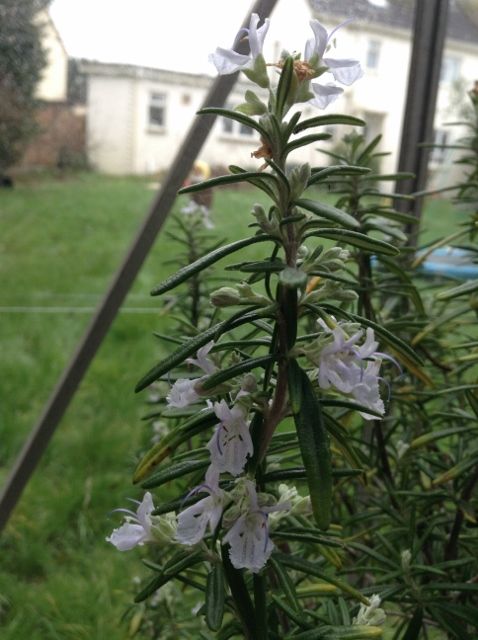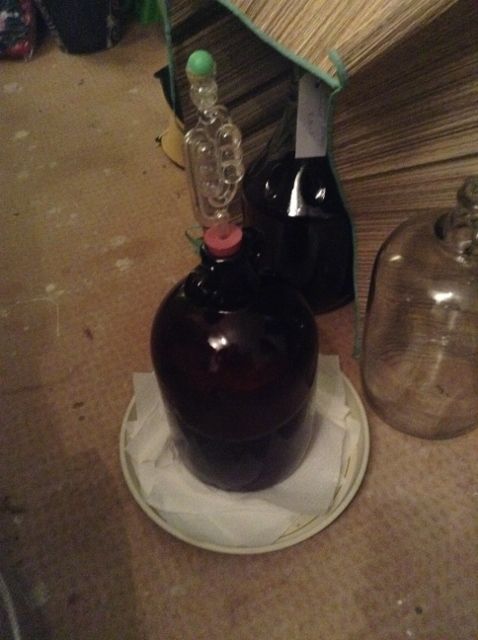
I won’t bore you too long with the history, I hate those blogs that spend half a page on it before you get to the recipe. If you want to know more that’s what Wikipedia is for. But anyway, mead is probably the oldest alcoholic drink in Sussex, perhaps the world. It’s basically just honey dissolved in water and fermented, with perhaps a few herbs added for taste. Saxons were big fans of it apparently.
Right, on with the mead. I will be doing a few of these how to make booze posts on the blog and it is assumed that there are a few basics that you’ll need to have down before we begin. There are countless books and forums on the subject, but most important is sterilisation. With any homemade booze you need to be anal about keeping things clean and sterile. I suggest you buy some good homebrew steriliser like VWP and have a good read of the label before you use it.
The ingredients for this mead are:
3lbs honey
A couple of sprigs of rosemary
A lemon
Some fresh ginger
A slice of bread
Fresh yeast

And the kit you’re going to need today is:
Steriliser
A demijohn
A funnel
An airlock and bung
A solid bung without the hole for the airlock
A kettle
1 camden tablet
A knife
You can get fresh yeast if you go up to the bakers in a supermarket and hang around annoyingly until someone comes to see what you want. Usually it’s free! But if you can’t get any or the supermarket are being tight you can substitute the bread and yeast for a packet of dried gervin yeast that you’ll be able to pick up anywhere there’s brewing gear. I get mine from the garden centre or Wilkinsons.

Sterilise all your equipment. Sterilise the airlock and bung in a bowl and keep the water in the bowl to fill the airlock when you get round to fitting it.
Pour the honey down the funnel into your sterilised demijohn. The viscous nature of honey makes watching it goo into a funnel and down into the demijohn hypnotic.

Pour in a kettle of boiling water and dissolve all the honey. Put the solid bung in the top and shake it all about until there is nothing sticking to the side of the demijohn.
Get the rest of your ingredients together and add them to the demijohn. Cut the lemon into 8ths and slice up the ginger. Remember to cut everything up small enough, if you have to force it into the demijohn think how you’re going to get it out again. My rosemary is sat in my greenhouse flowering at the moment. You may have to buy some if yours isn’t looking too clever in the winter.

Now top up with cold water to the gallon mark (about where the demijohn starts curving to the mouth usually). Put the solid bung back in and swirl it all around again.
Make sure it isn’t too hot, it should feel just about room temperature to the touch on the sides of the glass, not warm.
Pop in a campden tablet, these take the risk out of homemade wine making, available from all the usual homebrew sales places alongside yeast and steriliser. They remove the oxidants from the mead and help prevent it spoiling. My wines improved over night after I started using these. Crush it under a glass and pour it in.

Spread the yeast on a slice of bread, cut it into strips and poke it down into the demijohn. If the yeast is rubbery and dry then it’ll only need a drop of water to make it spreadable on the bread.

Half fill the airlock with sterilised water and put it on the demijohn.

Now the waiting. Leave it in a dark place, as light will hinder the yeasts work. I’m using a brown demijohn so I don’t need to worry about this, but if you’re using a clear one put it in the cupboard, and if you don’t have cupboard space just stick a black bag over it. Very soon, if not immediately, it’ll start bubbling through the airlock.

Note the tray underneath. I’ve got a feeling this could go a bit mental and bubble up through the airlock. If that happens take out the airlock, clean it and replace. Otherwise it’s going to smell something rotten.
Part 2 of the mead will come next month and you’ll need another demijohn and a syphoning tube. In the meantime keep an eye on this one every now and then, it should be slowly bubbling through and it’ll slow down and maybe even stop after a while. As long as you get a good 2 or 3 weeks fermenting out of it though that’s all good.
No comments:
Post a Comment